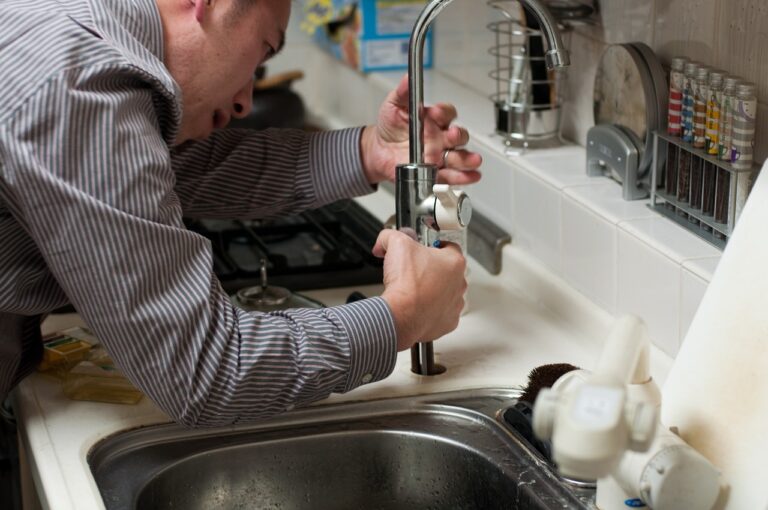What Should You Do After a House Flood?
One in four homes in the U.S. is at risk of flooding, according to CBS News. Rising water from nearby waterways or a broken water heater can cause mold, mildew, and damage to walls and floors. Cleaning up after flood damage can be a daunting task, but there are things you can do to get back on your feet.
After your house floods, turn off the utilities, stop the water at its source, put on cleanup gear, and remove the water. You’ll also need to notify the insurance company.
Here’s more on what to do after a house flood.
Turn Off Utilities
When you notice a house flood, cutting off the gas and electricity will prevent further damage. However, avoid touching any standing water if the electrical panel is in a flooded area.
The pilot light for gas-powered appliances might be out because of the flood damage.
Call a professional if you are unsure how to turn off electricity or gas following a house flood.
Stop the Water
Should a broken pipe be causing the flood in your home, stop the water at the source.
If the water comes from an outside source, such as flooding from a rising river or stream, you might not have any choice. Do your best to stop the water from coming into your home. Secure your windows or use sandbags to protect your water.
Put on Cleanup Gear
Floodwaters may be hazardous to your health, according to the Centers for Disease Control, so suitable footwear is essential as part of your flood cleanup gear. Flooding houses can mean cloudy or dirty water. You want to avoid contact with water contaminated with oil, gas, or even raw sewage.
Consider rubber boots for your footwear. It’s essential to cover as much of your lower legs as possible. Cloudy or muddy water could hide sharp objects such as nails, razors, or pieces of wood.
Also, use a good pair of gloves for flood cleanup. Wear an old t-shirt and jeans, so you can throw them away after cleaning.
Remove Water
If water getting into your home is a constant problem, a sump pump might be the answer for flood prevention. The pump will rid your home of groundwater that gets into your home frequently.
You can also use a mop and bucket or soak up excess water with towels or rags.
In some cases, you might need professional help.
Call Your Insurance Company
Call the insurance company and report the damage. Be as specific as possible. Have your policy number ready so you can give the agent all the necessary details.
Ensure you know how much water is in your home and the type of assessed damage. Discuss damage to walls, floors, and appliances.
One of the best flood prevention tips is having the right insurance. Find out more about getting the proper insurance needs for your home before a flood strikes!
Document the Damage
Take a camera and a notepad and document all of the damage. Leave no stone unturned!
Ensure you walk around the entire space – once, twice, or even three times if necessary. Take as many pictures as possible from different angles.
Be sure the lighting is proper. Check all the pictures before leaving the area to make sure each photograph is clear and crisp.
Once you have the photographs you need, make a backup. If necessary, print out all of your pictures.
Make notations of all of the damage to correspond with each photograph.
Begin Cleaning
Now begins the task of cleaning up after the flood! You’ll begin getting things back in order regardless of how long it takes.
Mud
Water coming from outside your home – such as water from rivers or streams – will likely be muddy. Use a shovel to get as much mud out of your home as possible. You’ll need a shovel and buckets.
As mentioned earlier, “flood mud” likely contains contaminants, so wear the proper gear.
Soak Up Water
Soak up any extra water with towels and mops. Leave the towels on the floor as long as possible to get as much water as possible. Repeat as necessary.
Ensure you use cleaning materials that you can easily discard.
Dry Out the Flooded Space
Dry the air out using a fan. Open any doors and windows to get as much fresh air moving through the space as possible.
Use a dehumidifier to get rid of any odor. These machines help eliminate dampness and humidity levels in the home.
Carpets
Remove any carpets and padding from the home. Get a wet vac to eliminate as much water as possible. Put the carpets in an area to dry, preferably outside.
Depending on the damage, you might be able to clean the carpets professionally.
Remove Damaged Items
Remove damaged furniture and other items, such as books, papers, and toys.
Determine what you can salvage and throw away the rest. Use a hose to clean items that you might be able to save.
Mold and Mildew
Stock up on disinfectants to clean any mold or mildew.
It’s best to clean the surfaces with a 10 percent bleach solution. Use a stiff brush to clean any mold and mildew from walls and floors.
Mold from flooding houses can make you sick, especially if your immune system is weak. Those with a mold allergy might also become ill. Symptoms of a mold allergy include coughing, sneezing, and breathing issues.
Save Receipts
Save any and all receipts used in the cleanup process. Put all receipts in a safe place to document them with the insurance company.
Even when the cleanup process is over, you’ll need receipts for any damaged items or professional crews used in your home.
What to Do After a House Flood
Several things to do after a house flood include turning off the water, stopping the water, and using cleanup gear. Then, remove the water, call your insurance company, and document the damage. Finally, begin the cleanup process and save receipts.
If you found this article helpful, find more information about business, real estate, and personal finance on our website.




